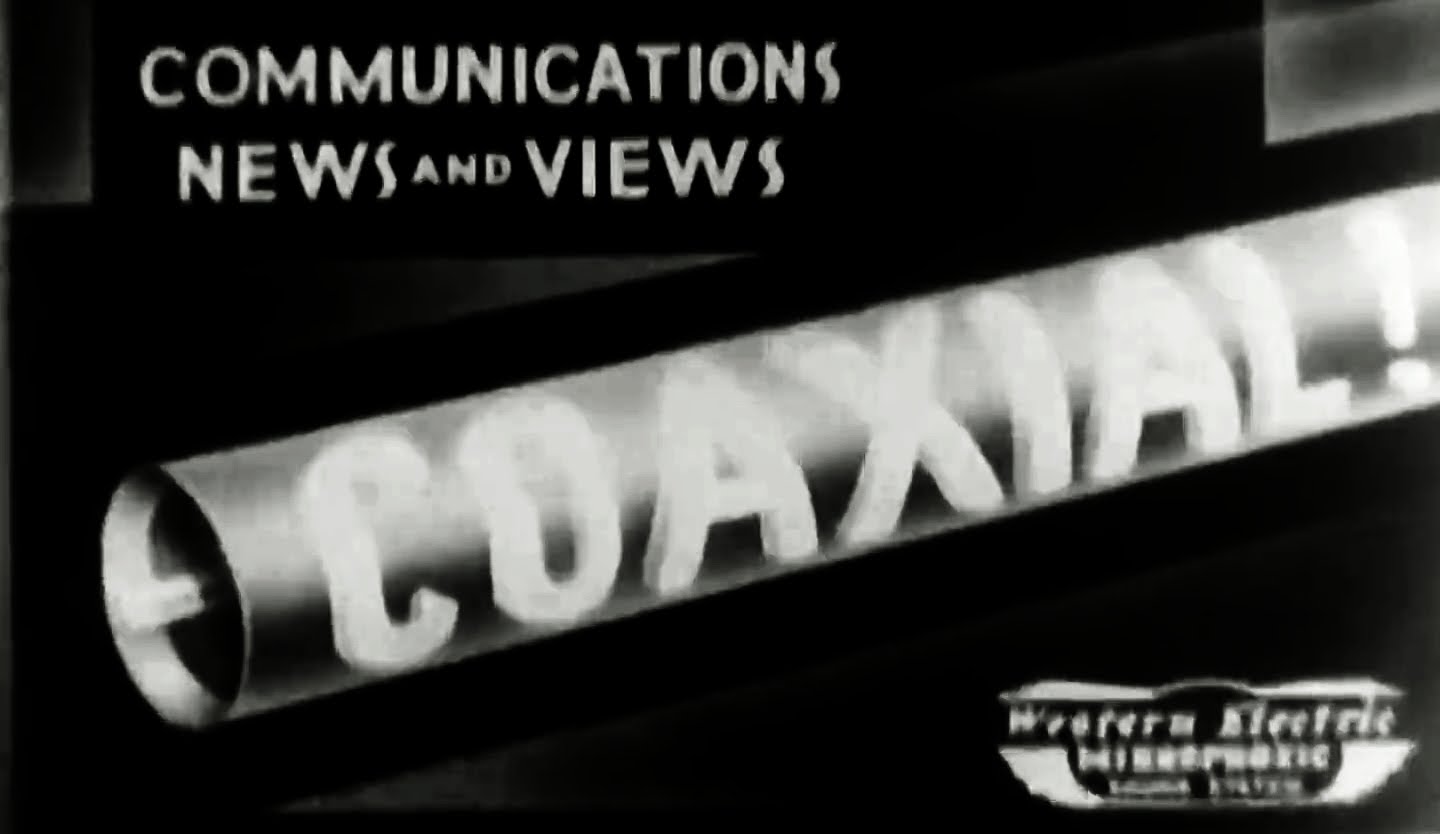Telephones & Telephony playlist:
more at
“Bell Telephone Laboratories, Inc. On the value and principles of the coaxial cable. Explains how the coaxial carries many conversations at once and how calls over long distances are amplified by repeater stations. Shows details in the manufacture of coaxial cable. The first commercial stretch of cable is laid between Stevens Point, Wisc., and Minneapolis, Minn.”
Public domain film from the US National Archives, slightly cropped to remove uneven edges, with the aspect ratio corrected, and one-pass brightness-contrast-color correction & mild video noise reduction applied.
The soundtrack was also processed with volume normalization, noise reduction, clipping reduction, and/or equalization (the resulting sound, though not perfect, is far less noisy than the original).
Coaxial cable, or coax (pronounced /ˈkoʊ.æks/), is a type of cable that has an inner conductor surrounded by a tubular insulating layer, surrounded by a tubular conducting shield. Many coaxial cables also have an insulating outer sheath or jacket. The term coaxial comes from the inner conductor and the outer shield sharing a geometric axis. Coaxial cable was invented by English engineer and mathematician Oliver Heaviside, who patented the design in 1880. Coaxial cable differs from other shielded cable used for carrying lower-frequency signals, in that the dimensions of the cable are controlled to give a precise, constant conductor spacing, which is needed for it to function efficiently as a transmission line…
Coaxial cable conducts electrical signal using an inner conductor (usually a solid copper, stranded copper or copper plated steel wire) surrounded by an insulating layer and all enclosed by a shield, typically one to four layers of woven metallic braid and metallic tape. The cable is protected by an outer insulating jacket. Normally, the shield is kept at ground potential and a voltage is applied to the center conductor to carry electrical signals. The advantage of coaxial design is that electric and magnetic fields are confined to the dielectric with little leakage outside the shield. Conversely, electric and magnetic fields outside the cable are largely kept from causing interference to signals inside the cable. Larger diameter cables and cables with multiple shields have less leakage. This property makes coaxial cable a good choice for carrying weak signals that cannot tolerate interference from the environment or for stronger electrical signals that must not be allowed to radiate or couple into adjacent structures or circuits.
Common applications of coaxial cable include video and CATV distribution, RF and microwave transmission, and computer and instrumentation data connections…

